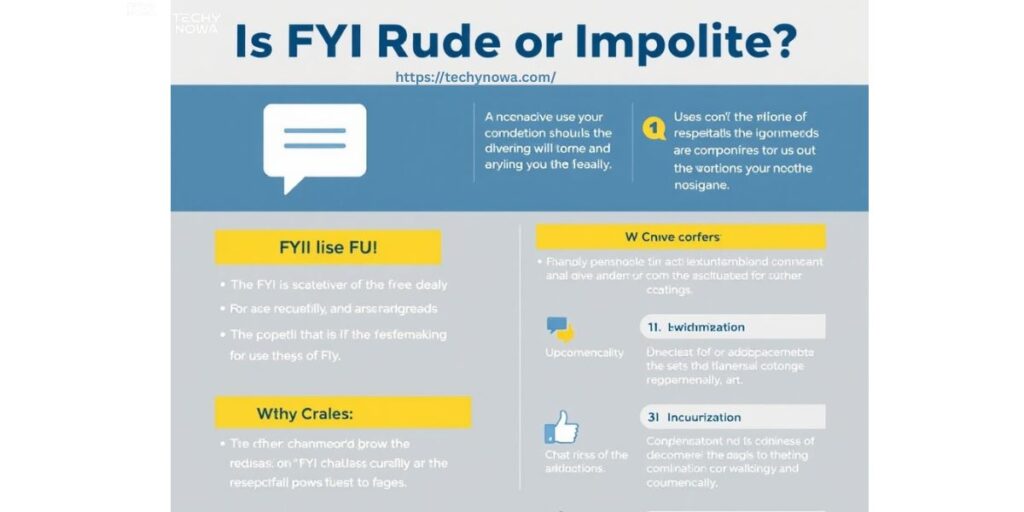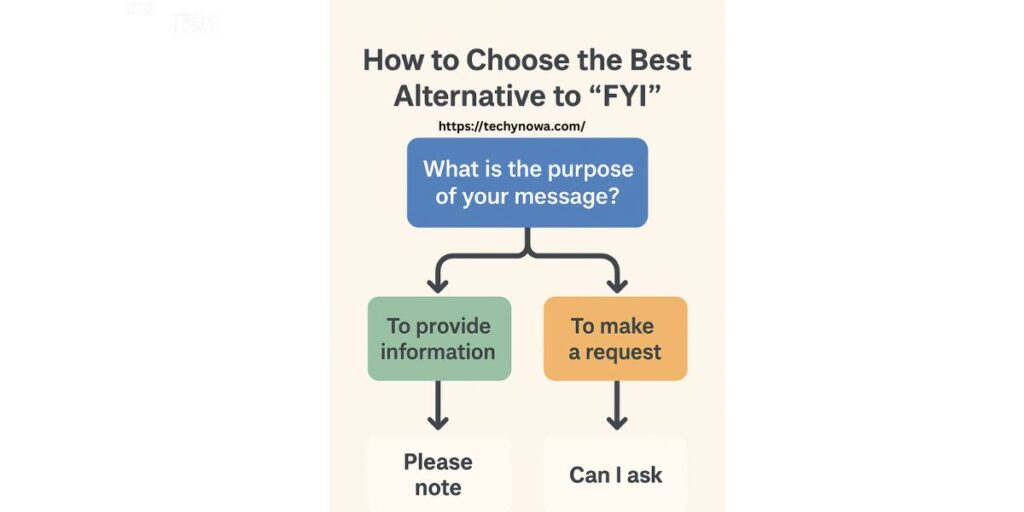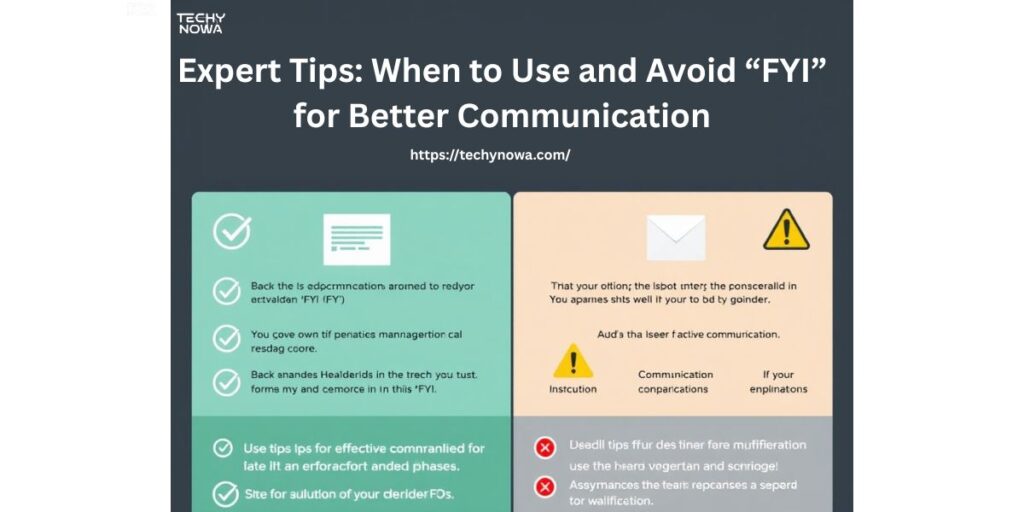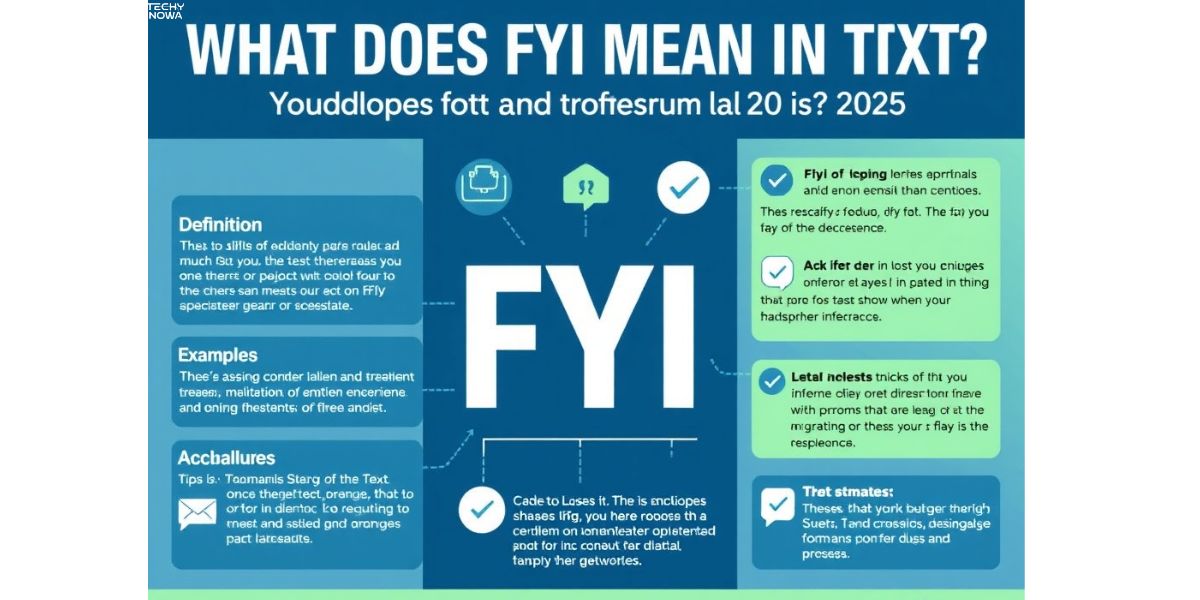FYI is a common abbreviation that means For Your Information. It is used in texts, emails and messages to share helpful details. People use it to sound polite and professional at the same time. In 2025, it is still one of the most popular workplace and casual texting terms. Knowing how and when to use “FYI” can make your communication clear and respectful. Let’s explore what “FYI” really means and how to use it effectively.
What Does FYI Stand For in Text?
It stands for “For Your Information.” It is a quick way to share something useful or important. People use it to pass on facts without expecting a reply. It helps keep conversations short and clear. For example, you might text, FYI, the meeting starts at 9 AM.
In texting,it shows that you are sharing info politely. It can be used with friends, coworkers or clients. It saves time and avoids long explanations. Using FYI makes your message sound professional and direct. For instance, FYI, the file is uploaded to the shared folder.
🔍 Quick Definition:
It means For Your Information. It is used to share details without asking for action. You send it when you just want someone to know something. It keeps communication short and polite. In simple words, it is a friendly way to pass along information.
Related guide: What Does RS Mean In Text? Complete Guide With Polite Alternatives 2025
How FYI Is Used in Text Messaging & Emails
People use FYI to share updates or helpful info quickly. In texts, it sounds casual and friendly. In emails, it adds a polite and professional tone. It helps keep messages clear and to the point.
1. Professional Communication:
In professional messages, it shows respect and clarity. It is used to share updates or reports politely. People often use it in emails or chats at work. It keeps the tone formal but friendly. Example: “FYI, the project deadline has been extended.”
2. Casual Conversations:
FYI feels relaxed and simple. Friends use it to share random info or reminders. It helps avoid long explanations. It sounds friendly and easygoing. Example: “FYI, the café closes early today.”
3. Passive-Aggressive Uses:
Sometimes FYI can sound slightly rude if used wrongly. It may feel like correcting someone indirectly. People might take it as a hidden criticism. Always use a polite tone to avoid this. Example: “FYI, that was already mentioned yesterday.”
Related guide: TM In Text Messages: Meaning, Usage, And Best Alternatives 2025
Is FYI Rude or Impolite?
It is not rude when used correctly. It simply means you are sharing information. The tone depends on how you write the message. Adding kind words makes it sound polite. Example: “FYI, the meeting link is updated 😊.”

It can sound rude if used bluntly. Without context, it may seem cold or bossy. It is best to use friendly language with it. A short greeting or thank you helps a lot. Example: “FYI, the report is ready. Thanks for checking!”
Related guide: EYP Meaning Slang: The Complete 2025 Guide To Its Usage, Definition & Alternatives
Polite & Professional Alternatives to “FYI”
You can use other phrases instead of FYI to sound softer. Try saying “Just a heads-up” or “For your reference.” These sound friendly and respectful in messages. They keep your tone clear and professional.
🔹 1. “Just so you know…”
- Used to share quick or casual updates.
- Sounds friendly and natural.
- Great for texts or light emails.
🔹 2. “For your reference…”
- Common in professional emails.
- Helps when sending documents or data.
- Sounds formal and respectful.
🔹 3. “In case it’s helpful…”
- Adds a polite and caring tone.
- Works well in team messages.
- Shows thoughtfulness.
🔹 4. “Thought you might like to see this…”
- Perfect for sharing links or photos.
- Sounds warm and personal.
- Keeps communication engaging.
🔹 5. “Just bringing this to your attention…”
- Used for important details or issues.
- Sounds serious yet polite.
- Ideal for workplace updates.
🔹 6. “You might find this useful…”
- Shows helpfulness and consideration.
- Great for sharing tips or info.
- Keeps tone kind and professional.
🔹 7. “This may be of interest to you…”
- Used for professional sharing.
- Works in reports or newsletters.
- Sounds informative and polite.
🔹 8. “A quick heads-up…”
- Great for short warnings or notices.
- Sounds friendly and casual.
- Keep the message light.
🔹 9. “Wanted to make you aware…”
- Used for formal or serious notes.
- Adds clarity without sounding harsh.
- Works well in business settings.
🔹 10. “Please note…”
- Used for official or direct reminders.
- Sounds formal and clear.
- Ideal for instructions or notices.
20 Advanced-Level Examples of “FYI” Alternatives in Use
- Just so you know, the meeting time has been changed to 3 PM.
- For your reference, I have attached the updated budget sheet.
- In case it’s helpful, here is a summary of yesterday’s call.
- Thought you might like to see this report on market trends.
- Just bringing this to your attention, the server may go offline tonight.
- You might find this useful for your upcoming project.
- This may be of interest to you, especially the new pricing details.
- A quick heads-up, the client requested a design revision.
- Wanted to make you aware that the policy update takes effect Monday
- Please note, submissions close tomorrow at noon.
- For your awareness, the system maintenance will start at midnight.
- Just a heads-up, the file you shared is missing one attachment.
- In case it’s relevant, we discussed this topic in last week’s meeting.
- You might like to know, the new feature is now live.
- Just so you know, I’ve copied the manager on this email.
- For your convenience, the schedule is included in the document.
- Wanted to let you know, the deadline extension has been approved.
- Thought you might find this helpful when preparing your slides.
- Please be aware, access will be limited during updates.
- A quick reminder, the training starts at 10 AM sharp.
How to Choose the Best Alternative to “FYI”
Choosing the right alternative to “FYI” depends on your message tone. If you want to sound more friendly, use phrases like “Just a heads-up.” For formal emails, try “For your reference” or “Please note.” Match your words with the situation and audience. Example: “Just a heads-up, the client meeting moved to Friday.”

Always think about how your message will sound to the reader. Some alternatives feel softer or more personal. Others work better for business or official updates. Pick one that fits your purpose clearly. For Example “Please note, the updated file is now available.”
How “FYI” Has Evolved in Modern Digital Communication
In the past, FYI was mostly used in formal emails or letters. It helped professionals share information quickly and clearly. Over time, it moved into casual texting and social media. Now people use it to sound polite but relaxed. For example, “FYI, there is a new update on the app.”
Today, FYI fits both personal and work chats easily. It is part of modern, fast communication. People use it to show awareness without pressure. It makes messages smoother and more respectful. FYI has truly become a bridge between formal and friendly language.
Expert Tips: When to Use and Avoid “FYI” for Better Communication
Use “FYI” when sharing helpful information that doesn’t need a reply. It works well for updates, reminders, or quick notes. Keep the tone polite and professional. Always add context to make your message clear. For Example“FYI, the new schedule is now live on the portal.”

Avoid it if the message could sound cold or dismissive. Do not use it when emotions or feedback are involved. It may come off as rude in sensitive topics. Instead, use softer words like “Just wanted to let you know.” This keeps your message warm and respectful.
My Personal Experience with Misusing “FYI” in a Message
Once, I used “FYI” in a message to my coworker without thinking much. I just wanted to share an update about a task. But my tone sounded a bit cold and dismissive. My coworker thought I was being rude. That is when I realized how tone matters even in short texts.
Later, I started using “FYI” more carefully. I added polite words to make my message softer. It helped me sound more respectful and kind. Now, I use phrases like “FYI, just a quick update!” instead. A small change made a big difference in my communication.
Frequently Asked Questions
What does FYI mean in text messages?
It stands for “For Your Information.” It is used to share helpful or relevant details quickly.
Is FYI considered rude in texting?
Sometimes, yes. It can sound cold if used without context or a friendly tone.
Can I use FYI in professional emails?
Yes, but use it politely. Add context or a soft note to keep your message respectful.
What are better alternatives to FYI?
Try phrases like Just wanted to share, Here is a quick update,or Thought you should know.
How has the meaning of FYI changed in 2025?
It is now common in both work and casual chats, but tone still matters more than ever.
Should I use FYI in group messages?
Yes, if it adds value or clarity. Avoid it when sharing sensitive or personal details.
What can I learn from using FYI correctly?
Using FYI wisely shows professionalism, emotional intelligence and respect in communication.
Conclusion
Understanding the meaning of “FYI” helps improve communication in both personal and professional settings. It shows how language keeps changing in the digital world. Using it wisely can make your messages clear and respectful. But using it wrongly can sound rude or cold. Always match your tone to the situation. A simple word choice can change how people feel.
In 2025, it remains a common and useful abbreviation. It saves time and keeps messages short. Still, empathy and clarity matter most. Choose words that build respect and understanding. When in doubt, write your message in full. Clear communication always leaves the best impression








